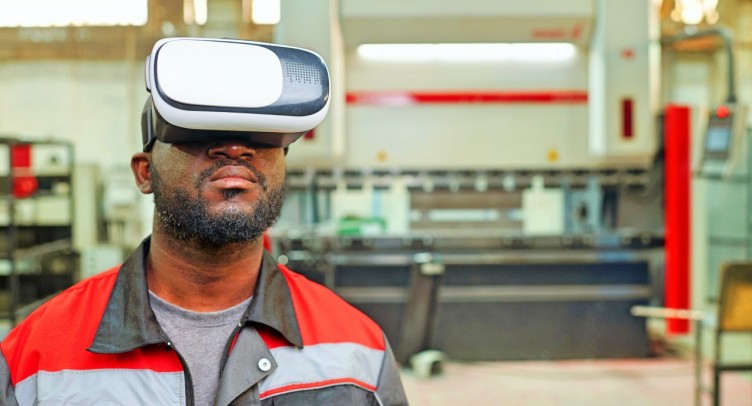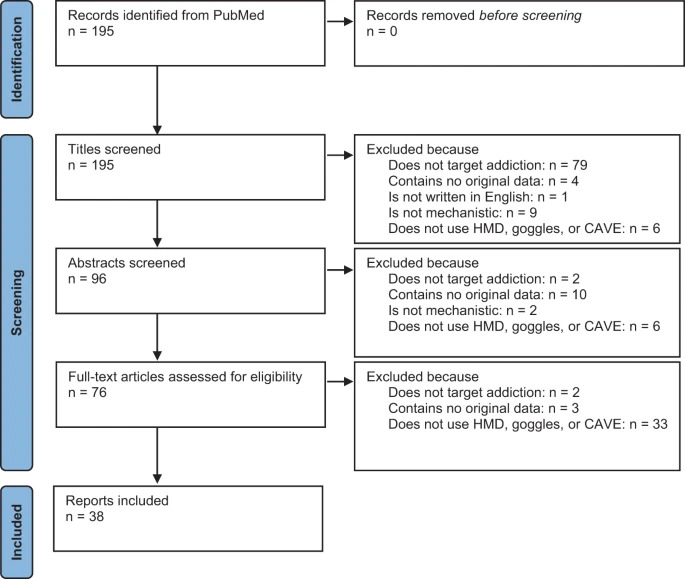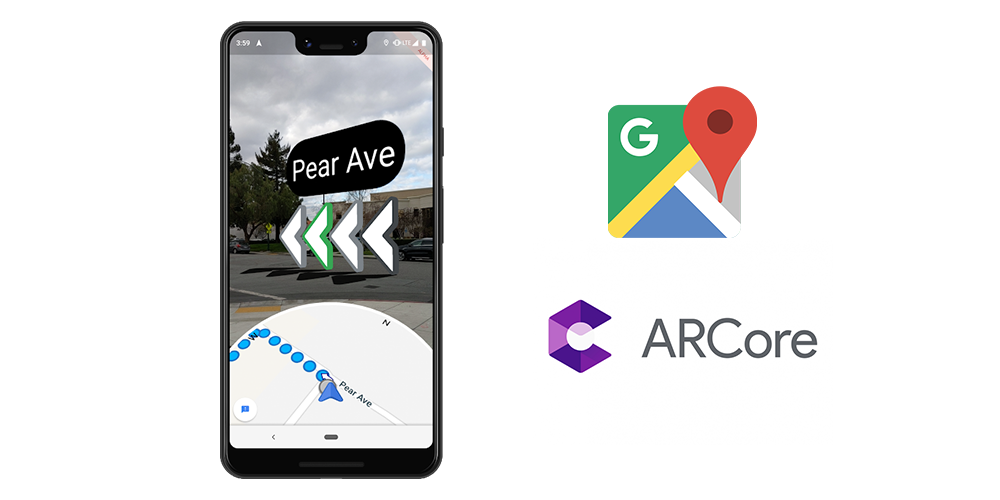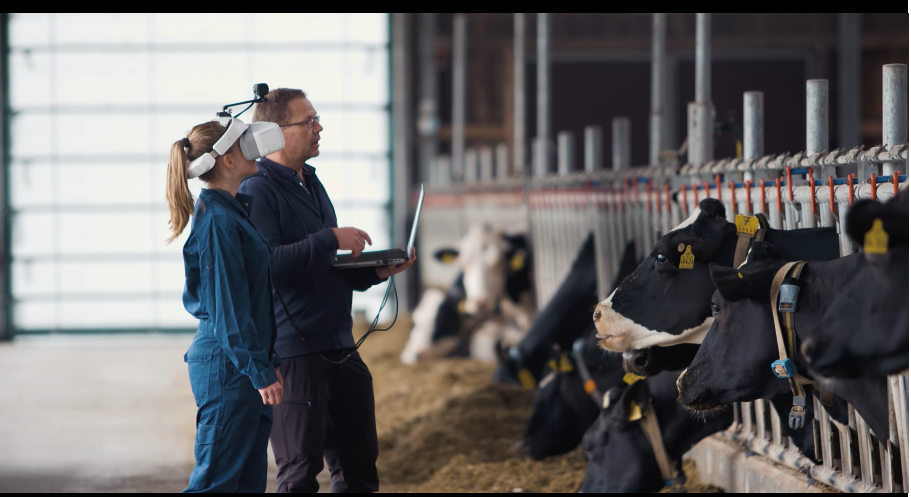The manufacturing industry is facing some pressing challenges today, such as sustainability, skills shortage, and geopolitical instability. It’s important to mention that, while Artificial Intelligence (AI) is at the forefront of this change, it’s not alone. Other technologies such as Virtual Reality (VR), Augmented Reality (AR), Internet of Things (IoT) and Machine Learning (ML) can also help manufacturers to create a more efficient and sustainable production process. The use of these technologies together, can make a significant impact on the industry, by creating an intelligent and adaptive manufacturing environment.
Tackling Sustainability Challenges
One of the main benefits of AI and VR in manufacturing is its ability to improve sustainability by reducing waste and energy consumption. When it comes to testing new manufacturing processes and designs, VR can provide advanced immersive solutions before they are implemented in the real world? Companies can easily identify and eliminate potential inefficiencies and waste. They can train employees on new equipment and processes to reduce the need for physical prototypes, which in return decrease energy consumption.
Reducing Skills Shortage

Skills shortage is one of the major problems that many companies in the industry are facing. Personally, I believe that VR has a huge potential and the ability to address these challenges with immersive, hands-on training that simulates real-world manufacturing environments, helping employees develop the specific skills required to operate complex equipment and perform advanced manufacturing tasks. Virtual factories can also offer employees brand new environment to explore and to learn from, fill the skills gap and increase productivity at the same time.
Navigating Global Instability
Geopolitical instability has become a growing issue the last few years. Some of the biggest risks the world has faced the last 2 years span from soaring energy costs, shortage of energy supply, food insecurity, international sanctions and a deglobalisation trend in order to overcome global supply chain issues.
All these factors can disrupt supply chains, which can lead to increased costs and reduced economic growth. Developing Virtual Reality experiences with the help of AI and machine Learning (ML) can help mitigate some of these risks by simulating different scenarios and test the response plans.
Creating a virtual supply chain world similar to the Metaverse may help companies simulate risks, identify issues and minimise their impact on different suppliers and logistics routes. In the face of today’s rapidly changing business environment, it is an idea worth exploring.
Creating Efficient Processes With AI
Monitoring production processes in real-time with AI-powered sensors has become a key factor to obtain important detailed data on energy consumption, waste production, and other key performance indicators. This data can be used to identify patterns and trends, areas of inefficiency and waste, and develop strategies for reducing them.
Automating repetitive, monotonous and time-consuming tasks is another area where AI-powered robots can optimise production schedules by performing tasks such as welding, painting, and assembly with a high degree of precision and speed.
AI-powered predictive maintenance systems has also proven valuable in areas where they can identify and diagnose equipment problems before they occur. I had the chance to discover some of the areas where using predictive maintenance through sensors can make a difference, including vibration analysis, thermal imaging, and equipment monioring to help extend the life of any company’s equipment.
Combining The Power of AI With Machine Learning (ML)
While many manufacturers are successfully implementing AI-powered solutions in small-scale pilot projects, they often struggle to replicate these successes at a larger scale. This is due to a number of factors, including a lack of understanding of how to integrate AI into existing systems, a lack of data and computational resources, and a lack of expertise in AI development.
Machine learning (ML) can help manufacturers overcome these hurdles and scale effective AI pilot applications. ML is a subset of AI that focuses on developing algorithms that can learn from data and improve over time. By using ML, manufacturers can create AI systems that can adapt and improve as they process even more data, which can help to overcome the limitations of traditional AI systems.
Scaling AI Through ML to Automate Processes
One of the key ways that ML can help manufacturers to scale AI is by automating the process of feature selection and model development. Feature selection is the process of identifying which data inputs are most important for a particular task, and model development is the process of creating an algorithm that can make predictions based on that data. By automating these processes, manufacturers can significantly reduce the amount of time and expertise needed to develop and implement AI systems.
Another way that ML can help manufacturers to scale AI is by providing them with more accurate predictions and better insights. Machine learning algorithms are able to learn and improve over time, which means they can provide more accurate predictions and insights than traditional AI systems. This can help manufacturers to make more informed decisions and optimise their production processes more effectively.
Conclusion
Early this year, the Word Economic Forum has released an interesting article highlighting the —6 ways to help the manufacturing sector embrace AI.
It’s important to mention that AI should work together with other technologies like Virtual Reality, Internet of Things and Augmented Reality to create a more intelligent and adaptive manufacturing environment. AI can help companies to create a more resilient and adaptive production process while VR technology can help manufacturers focus on sustainable production processes by reducing waste, increasing productivity, and providing employees with immersive, real-life training.
In the end, leveraging machine learning to help create better AI-powered systems that can be used to simulate different scenarios will give manufacturers the ability to identify potential risks, create more effective production processes, and stay competitive in today’s rapidly changing business environment.
Quelle:
Foto. Artificial Intelligence (AI) Augmented Reality (AR) and Internet of Things (IoT) can help manufacturers to create more sustainable production processes.




